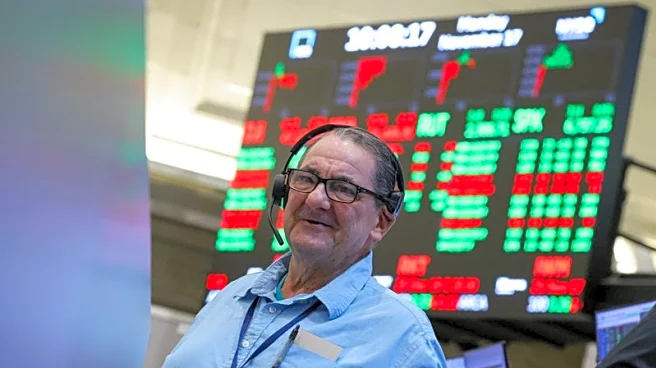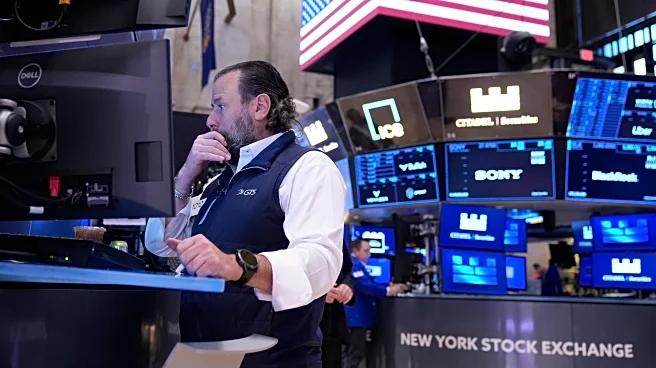What's Happening?
The cryptocurrency market has experienced significant volatility following President Trump's recent threats of imposing massive tariffs on China. This announcement led to a substantial sell-off in the crypto ecosystem, particularly affecting mid-tier
and lower-quality coins. The market had previously assumed that the worst of the tariff disputes had passed, but Trump's comments reignited fears, causing a $1 trillion loss in market value since October 6th. Additionally, the Federal Reserve's indication that a December rate cut might not be guaranteed has contributed to profit-taking among speculative assets, including cryptocurrencies.
Why It's Important?
The fluctuations in the cryptocurrency market highlight the sensitivity of digital currencies to geopolitical events and regulatory changes. President Trump's pro-crypto stance and the reversal of regulations enacted under the previous administration had initially fueled a rally in the market. However, the recent tariff threats have undermined investor confidence, demonstrating the interconnectedness of global trade policies and financial markets. This situation underscores the volatile nature of cryptocurrencies and their susceptibility to external factors, impacting traders and investors who rely on stable market conditions.
What's Next?
As the year progresses, the cryptocurrency market will be closely monitored for further developments. If Bitcoin falls below another psychological threshold, such as $90,000 per token, it could signal a shift in retail investor sentiment. The market's response to potential regulatory changes and geopolitical tensions will be crucial in determining the future trajectory of digital currencies. Investors and stakeholders will need to navigate these uncertainties while assessing the long-term viability of cryptocurrencies as speculative assets.















